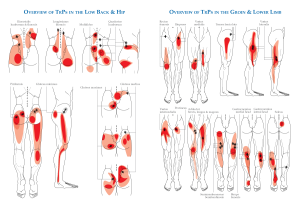Protect Your Child’s Spine by Monitoring Their Screen Time

Category: | Author:
The holiday season has come and gone, and that means that millions of families are playing with new electronics like i-Pads, tablets and e-readers. These electronic devices can be a fun way to pass the time on a car ride or engage your mind with a good book, but it’s important that parents take note of their child’s screen time and set appropriate limits. Among other potential issues, prolonged screen time on these devices can really be hard on your child’s spine.
According to a recent study, American children between the ages of 8 to 12 spend four to six hours a day watching or using screens. And if you’ve ever observed a child while they are using a tablet or watching television, they are oftentimes slouched into the couch or hunched over their device, which puts additional strain on their neck and lower back. It should come as no surprise that doctor visits for neck and back injuries among adolescents have risen significantly in the past decade.
Of course, setting screen time limits and being aware of posture positioning while watching or using screens isn’t just an issue for the younger generation. Older adults can be just as bad when it comes to screen time and posture when playing on their devices, so be sure that you set a good example for your children and grandchildren. Surgical procedures to address degenerative discs and pinched nerves have increased in recent years among older generations, and many medical experts believe that tech devices like cell phones and tablets are partially to blame.
Tech Neck Prevention
Neck and back pain that is driven by poor posture while using tech devices like a tablet or i-Pad is typically referred to as “tech neck” or “text neck,” and you can learn more about the condition . If your child recently got a new device this holiday season and you want to protect their neck and spine from damage, consider these tips:
- Set Limits – Set session limits and usage limits for the whole day. Consider not letting them use the device for more than a half hour at a time, and consider limiting their total screen time to an hour or two a day. We know that’s not always possible, but strive to set healthy limits based on your specific situation.
- Be Active – Make it a point to be active when your kids aren’t on their devices. Go outside, play at the playground, ride a bike, you name it. Don’t just swap the tablet for the television. Help your kids be active, as this will help to develop strong bones and muscles, which in turn helps to prevent posture-related issues.
- Posture Improvements – Help your child get into a comfortable position when using their devices. It’s easy to put the tablet in their lap and hunch forward to use it, but that will put a lot of strain on their neck. Consider getting a case or a cover that has a built-in stand so that your child can use it at a table without having to hunch forward to use the device. Having good seated posture while using a device can make a world of difference.
Electronic devices can be immensely fun, especially for younger children who are learning the tech for the first time, but they can also lead to physical, mental and emotional issues if their device usage goes unregulated. Make it a point to set healthy limits and encourage them to be physically active each day, and their spine will thank you for it.
For more information, or for help with a different back or neck issue, reach out to Dr. Sinicropi and the team at The Midwest Spine & Brain Institute today at (651) 430-3800.
Related




